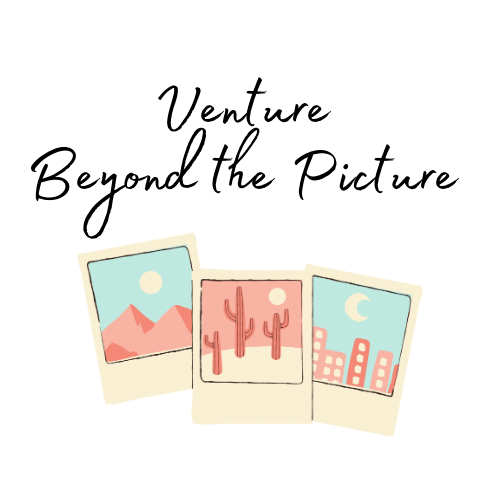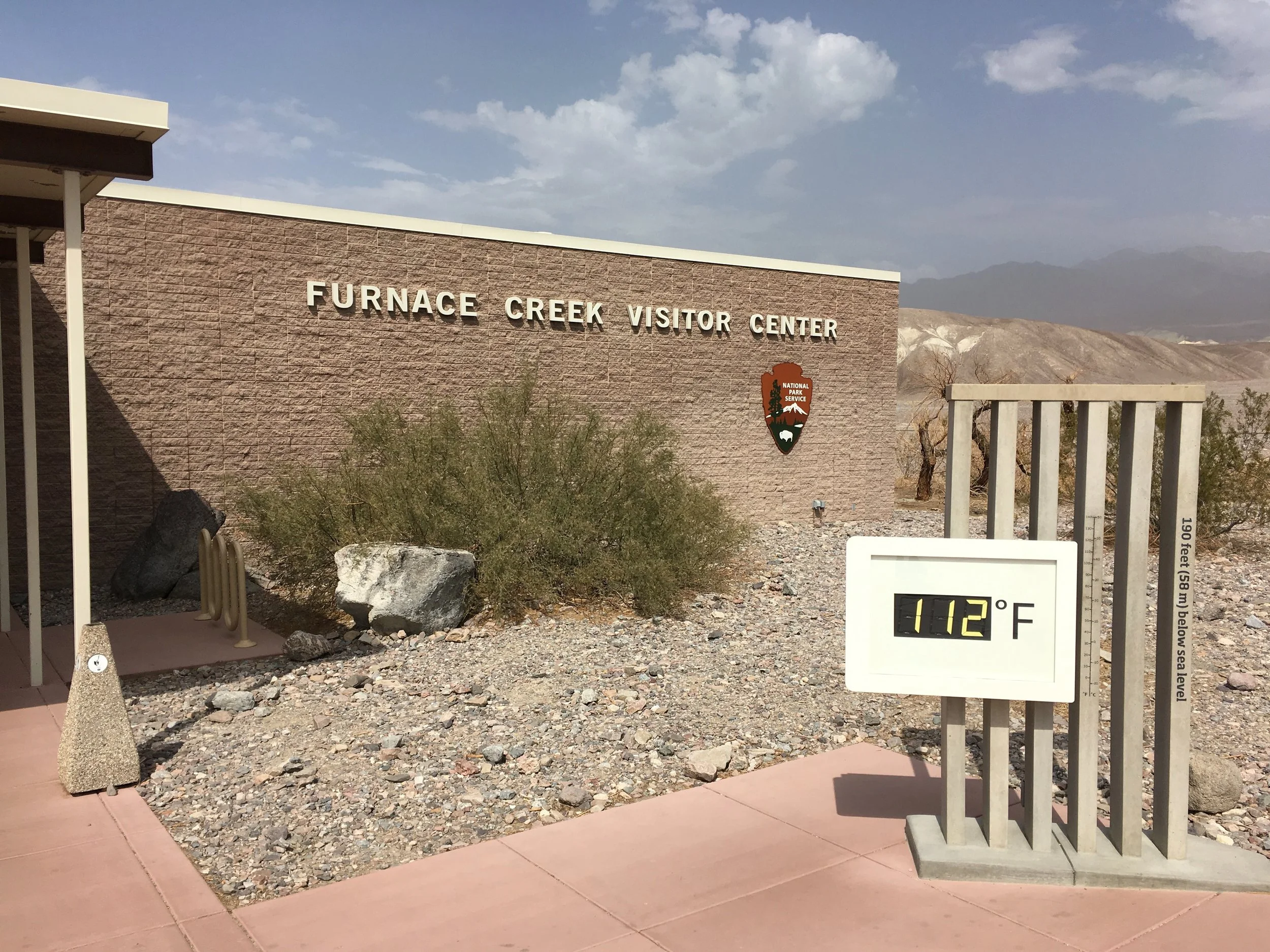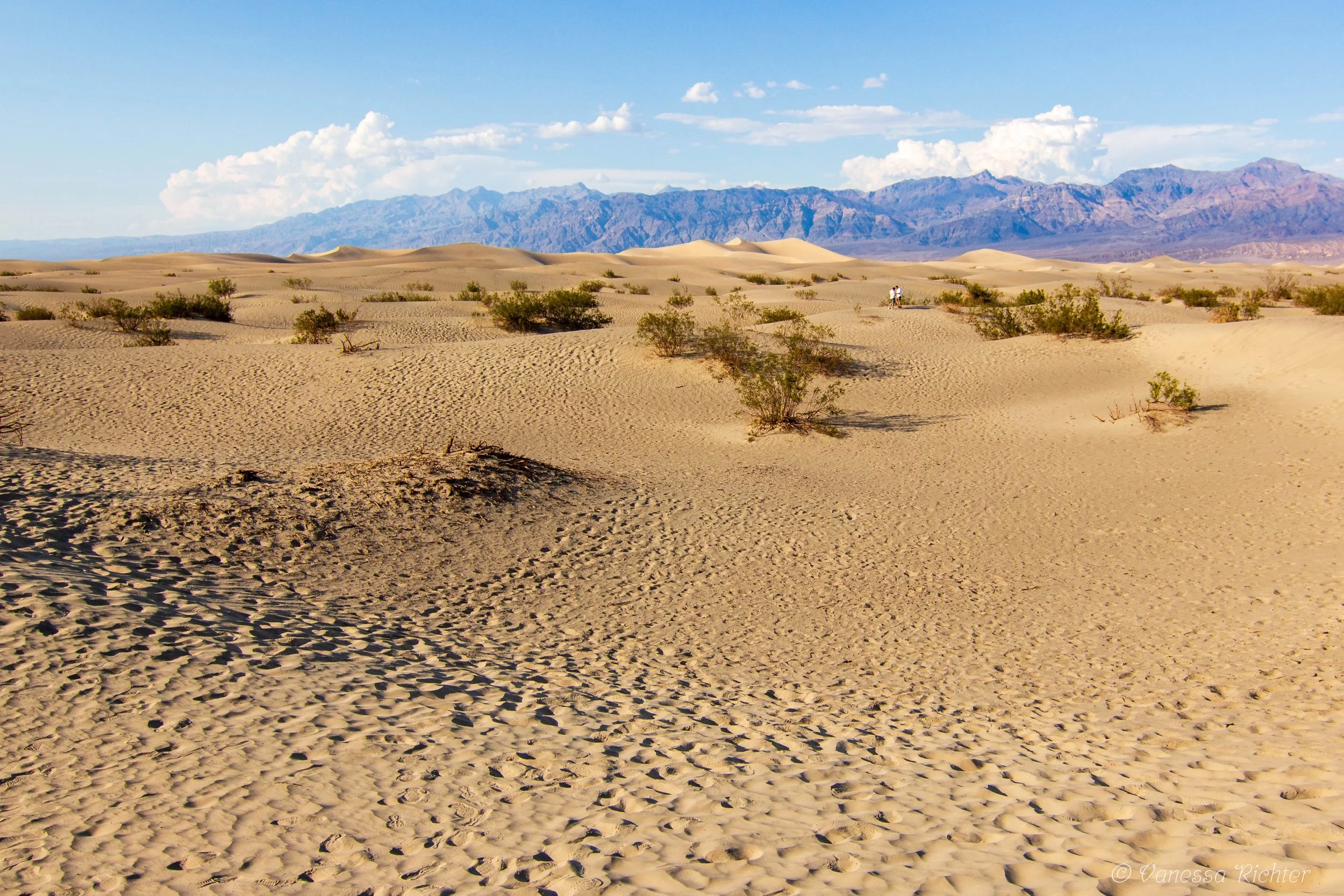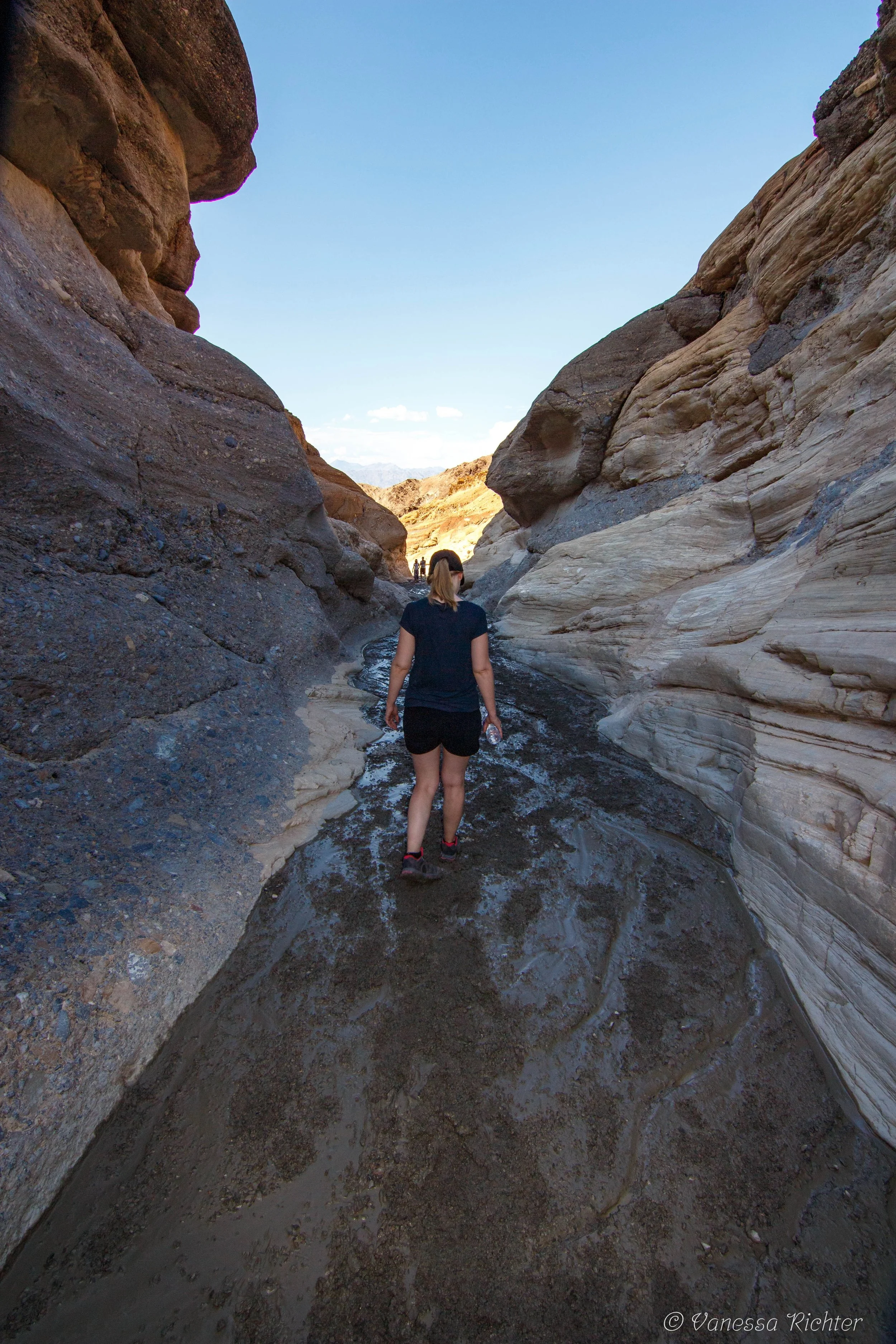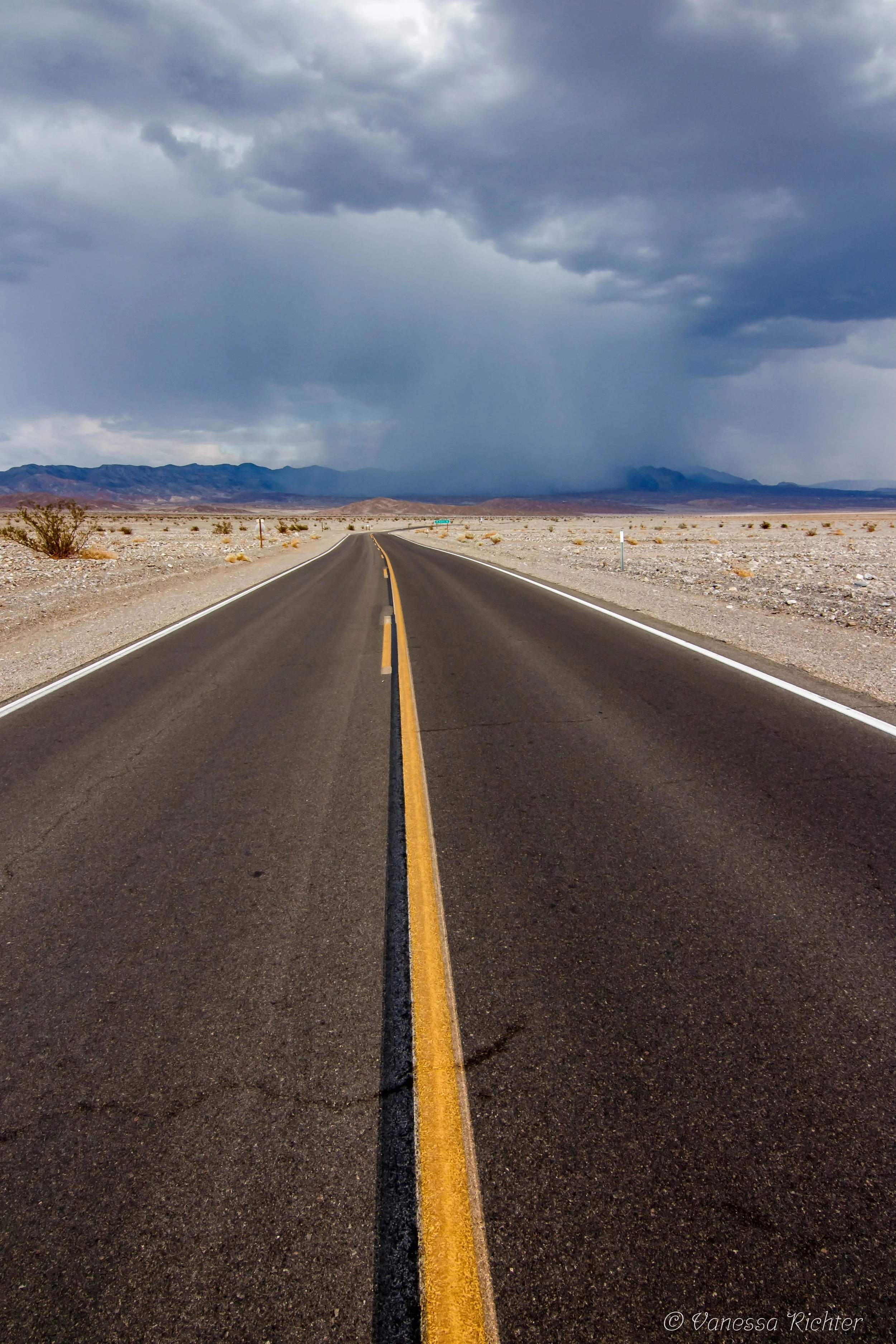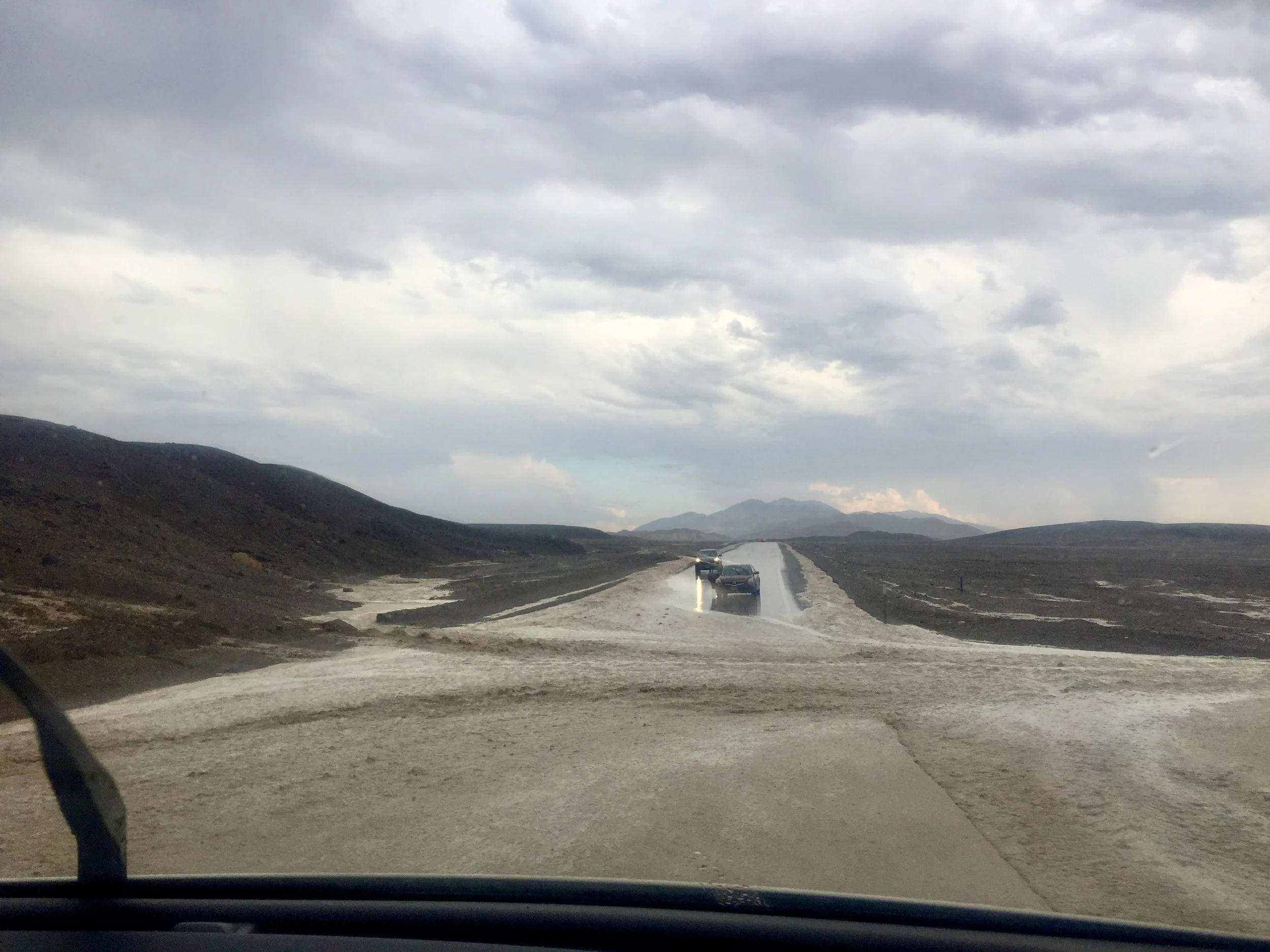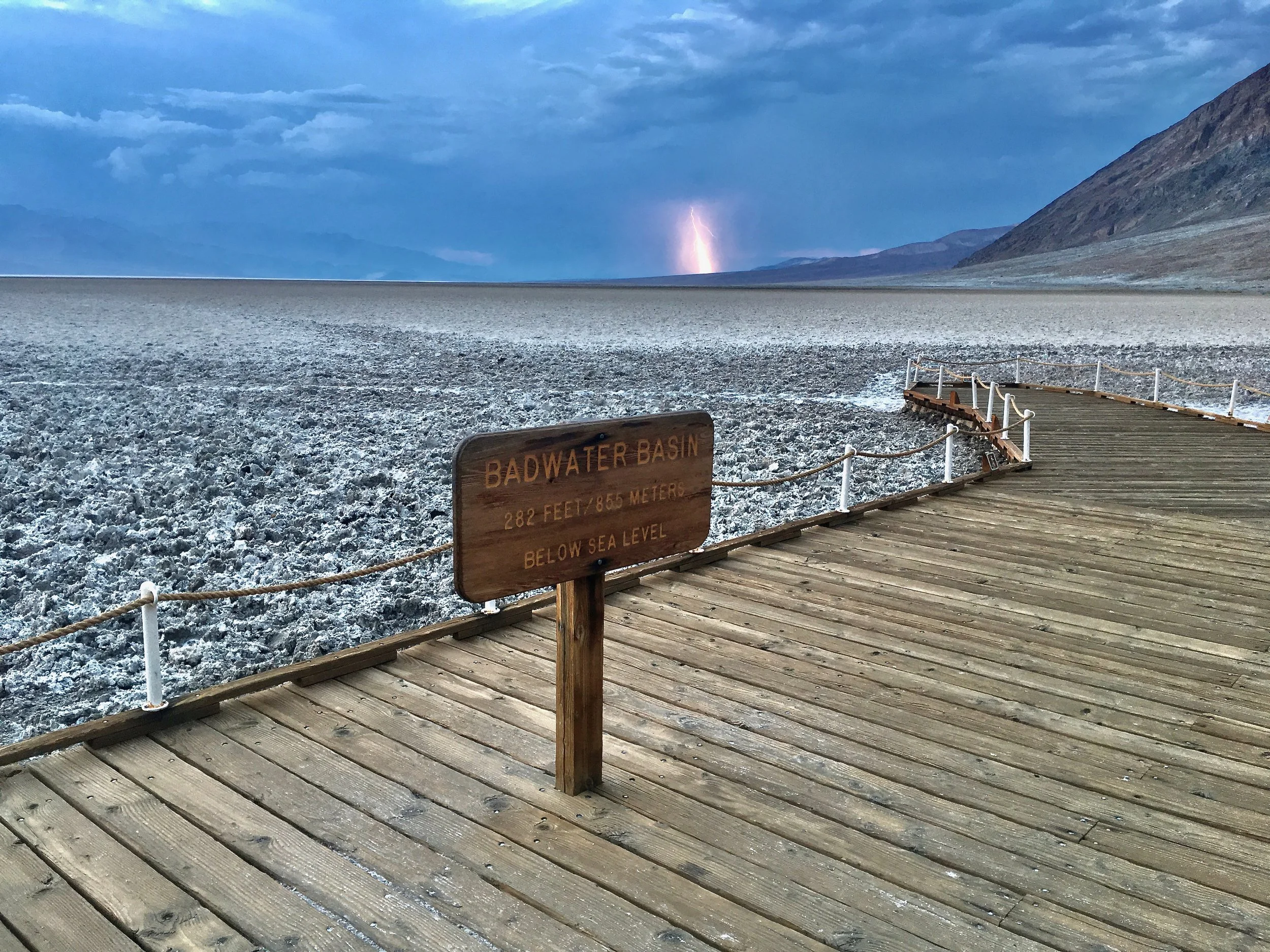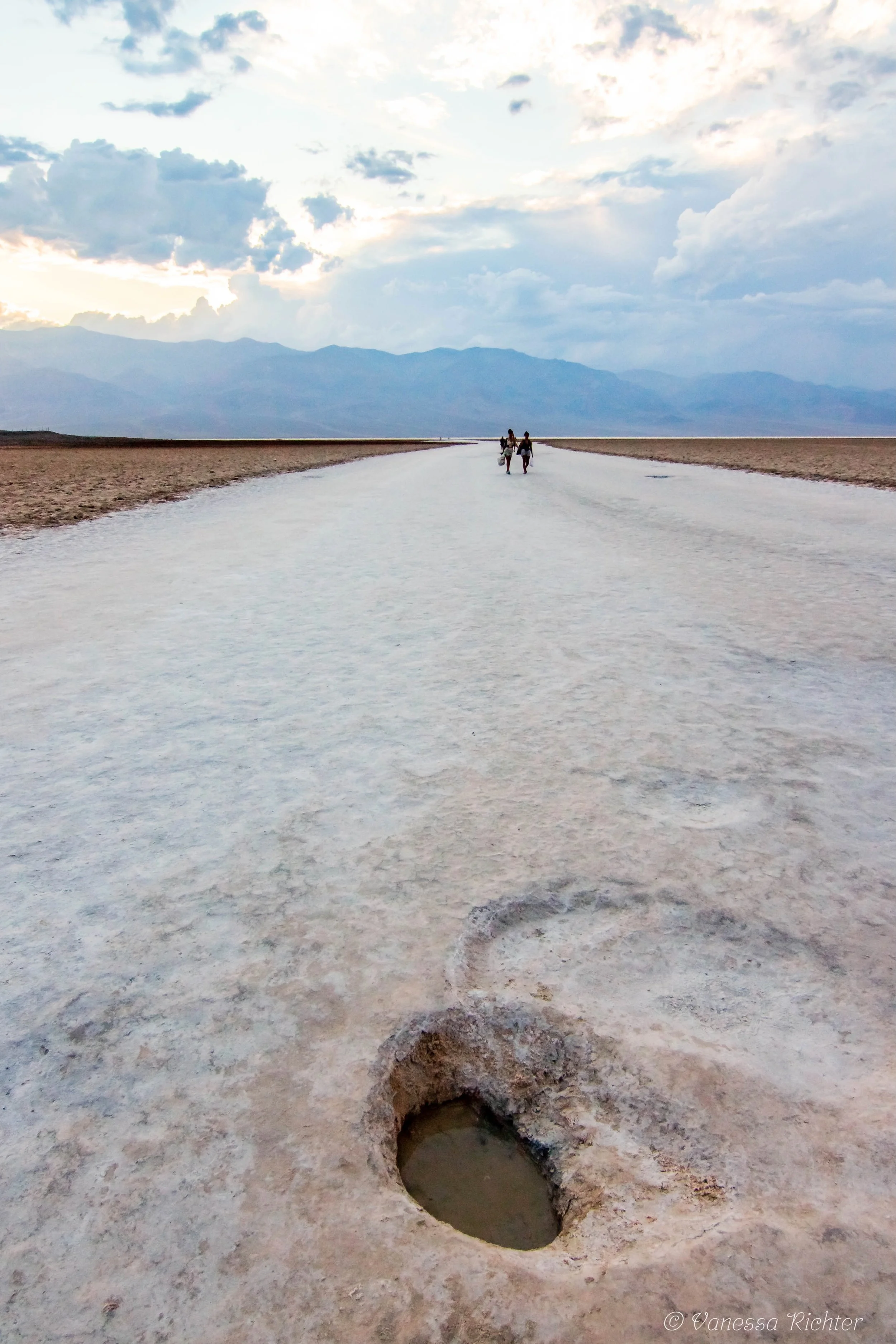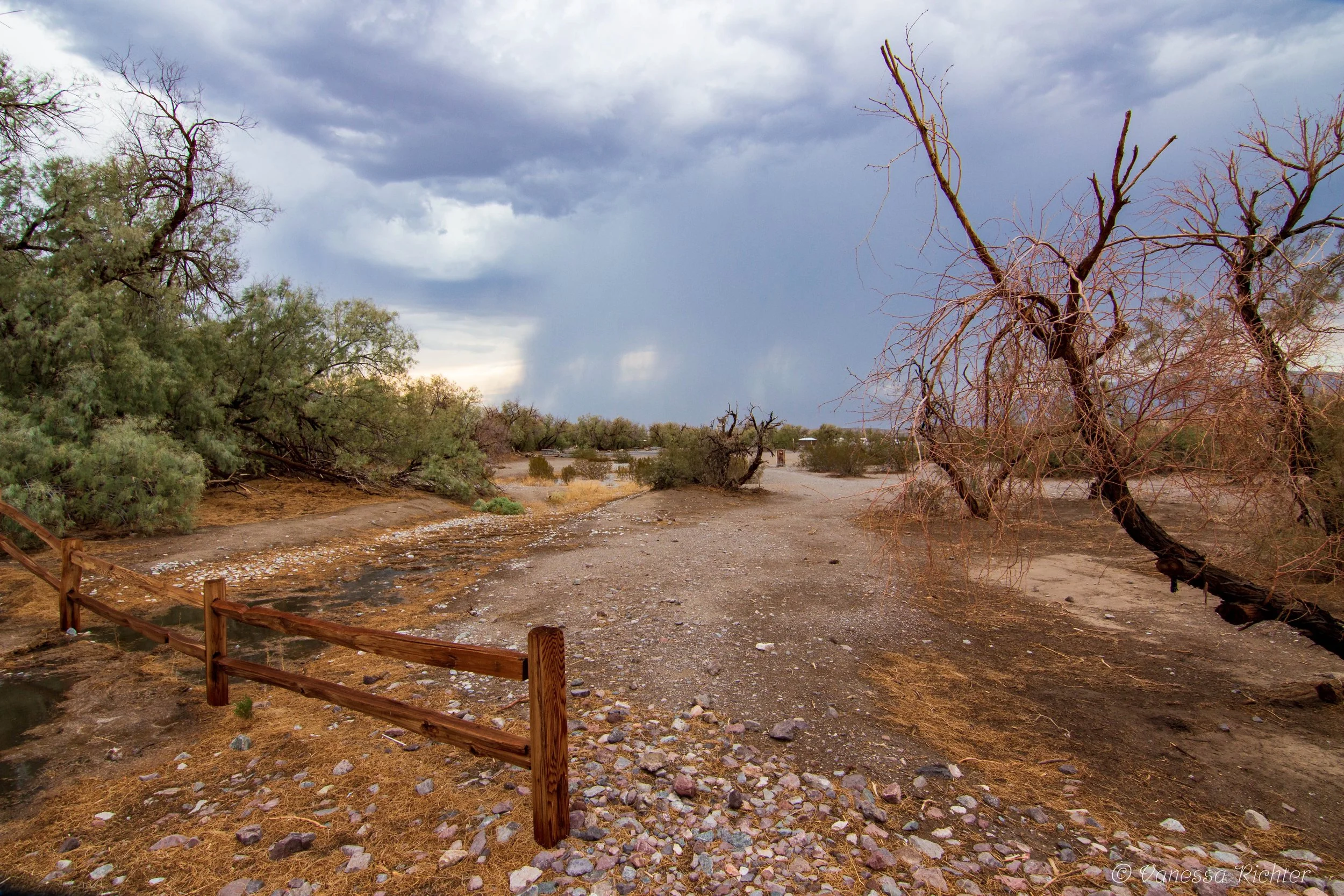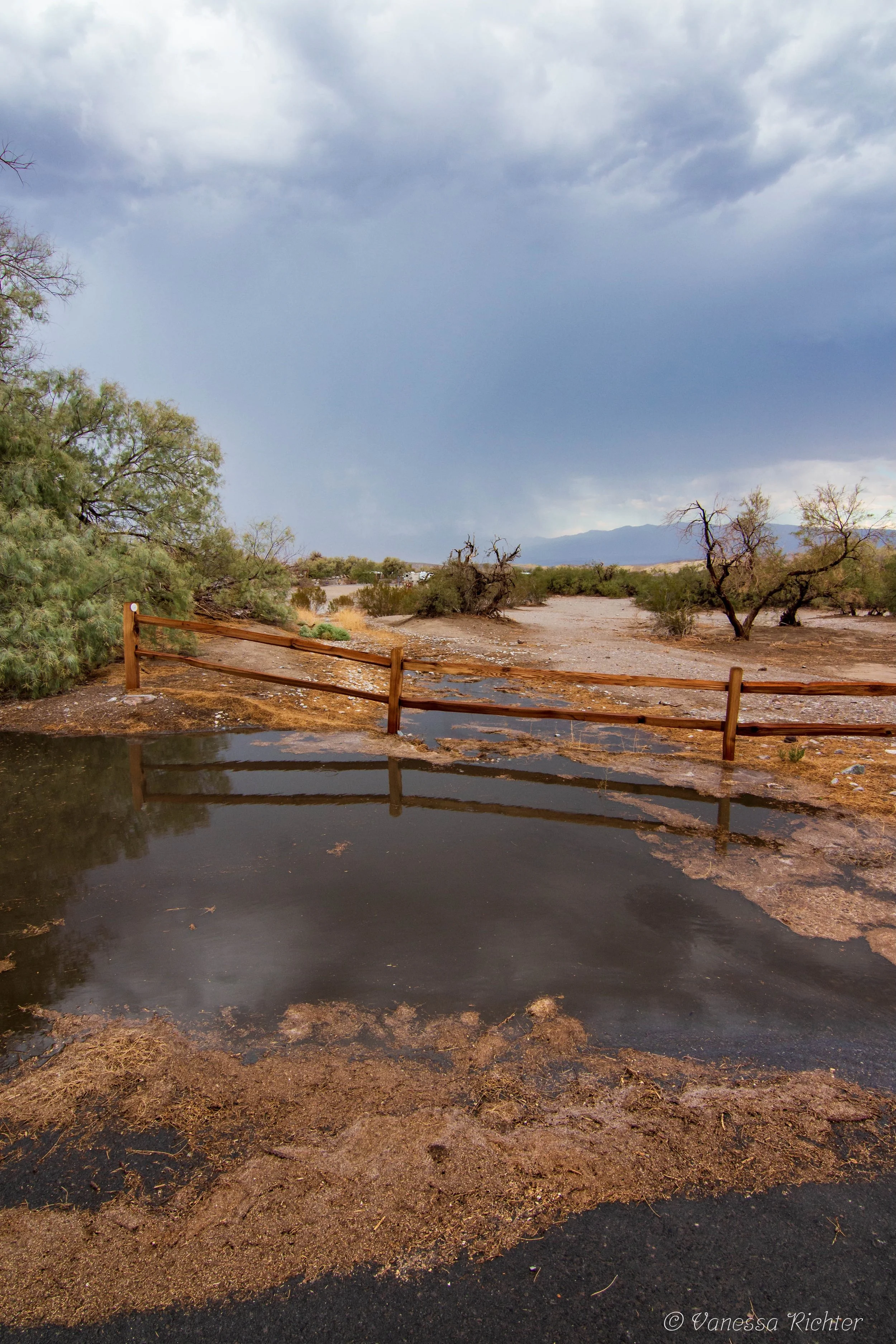Death Valley Thunderstorm Experience: From Zabriskie Point to Mesquite Flat Sand Dunes
While summer is slowly winding down in many parts of the Northern Hemisphere at the end of September, the hottest place on Earth is still sweltering under the scorching sun.
As I gazed at the muddy ground beneath my feet in confusion, I couldn't help but wonder: 'Is this not just the hottest place on Earth, but also the driest? Why is it so wet here?' The ground appeared to be thoroughly soaked, even though the temperature soared above 110 degrees Fahrenheit. This phenomenon could only be explained by something almost unimaginable for this place: recent rainfall!
Well, how little did we know back then — 2017 — on our first visit to Death Valley National Park.
The park may hold the title of the driest place on Earth, with an average of less than 5 inches of precipitation per year, which is even less than what most deserts receive. However, occasional thunderstorms during the summer monsoon season or winter storms can bring heavy rain to the bone-dry ground, which is unable to absorb such massive amounts of water.
Colorless, light yellow, or even dark orange? I examined the information sheet with the color scale in the visitor center restroom. It's reassuring that I've been vigilant about maintaining my hydration! If this doesn't help me navigate the hottest and driest place on Earth safely, I'm not sure what will. It's certainly a good idea to monitor one's drinking habits in this environment. After all, the thermometer reads 112 degrees Fahrenheit (approximately 44.5 degrees Celsius). Well, considering what's possible in this location, that doesn't seem too bad! It's more than enough to experience the extreme heat firsthand.
But let's start from the beginning: The first lesson we learned from our first visit to Death Valley was not what urine tells us about our fluid balance (which is probably not news to most, I hope), but that wind doesn't only exist in conjunction with cold. At Zabriskie Point - our first stop in the Valley and at the same time our first highlight - we felt like we were standing in front of a gigantic hairdryer.
Even in reality, the view looks just as surreal as it does in the photo. The sensation of standing in front of what seems like an enormous photo wallpaper backdrop certainly creeps in. Are we, perhaps, like Truman, unknowing protagonists in a show? (For those unfamiliar with Truman, I recommend watching the 1998 movie 'The Truman Show' starring Jim Carrey).
The thought of being in this fascinating and at the same time hostile environment is something you cannot shake off.
Although one can hardly get enough of this surrealness, we eventually move on — Not only to seek refuge in the air-conditioned car, but also because there are just so many other places to discover in Death Valley. Our next destination: the Mesquite Flat Sand Dunes, which are equally captivating.
To reach them from the parking lot, you must traverse on foot. There is no clearly defined path, and the tracks left behind in the sand disappear almost as quickly as they appear. You can catch a glimpse of the dunes from the parking lot. On this day, however, there are only a few who venture all the way to them.
Just about seven kilometers from the dunes is Mosaic Canyon. The joints of our van creak and squeak under the vibrations of the gravel road we have to overcome to get here. After fifteen minutes of jerking, we reach the canyon. We give our vehicle a break and start walking right away. A sign tells us - as at many popular places in Death Valley - that hiking after 10 a.m. is not recommended. It is 4 p.m. and we feel sweaty, yet comfortable for a short peak into the canyon as the entrance is luckily not far away. The rock walls stand in narrow waves to each other.
But something is unusual here. It doesn't take long until we notice what: The ground is completely soaked. Sure, due to the narrowness little sun gets here, but muddy ground with average daily temperatures between forty and fifty degrees Celsius in the last weeks? It must have rained in the not too distant past. And not too scarce! We did not expect to find water in the desert during our first visit. At that point, we did not know that this should not remain our only wet encounter.
As we feel like we can take even more heat, we set off for Badwater Basin, the lowest point in the USA at 86.8 meters below sea level and simultaneously the hottest place on earth. While still pondering our recent wet 'discovery,' we notice dark clouds forming on the horizon. Initially, it doesn't faze us. So many times we had seen the lightning twitching from a distance during our travels, but they never reached us. And a thunderstorm in Death Valley of all places? How unlikely is that! How little did we know that it was monsoon season and thunderstorms are, in fact, not that uncommon!
We continue our drive. The threatening clouds are starting to look as if they are getting closer. At the same time, they seem darker and darker.
The road seems to be embedded in a lunar landscape to the left and right. Cars keep passing by us. Their headlights gleam at us as the sky grows darker and darker.
The wind is picking up.
A tangle of dead brush, fulfilling every Wild West movie cliché, sweeps across the asphalt.
Slowly we suspect that the not so unimaginable must also hit someone and we are getting more queasy. How do the rare storms in Death Valley turn out? Nevertheless, we keep going. After all, what good would it do us to stop now? In the meantime, not just the tangles of scrub sweep past us, but also the swirling sand blows across the road. The initially still rather quiet rumble of thunder becomes more and more clear. When the first lonely drops splash on our windshield, we know: It's about to start. The few raindrops are joined by more and more, and all of a sudden the individual drops turn into a downpour that streams down the rear window like a waterfall. We see nothing but a milky flood and stop - without knowing exactly how close we are to the edge, because everything happens blindly. We are somewhat reassured by the fact that no car is likely to be driving in this situation. Our feelings are split between adventurousness and a little fear of what the thunderstorm still has in store for us.
However, after less than ten minutes the spectacle is over. Now that we can make out our surroundings again, we notice what has happened in this short time. The dried up ground could not absorb all the water. From the hills, the resulting flood-like streams find their way, sometimes directly over the road. We continue to a place where we cannot estimate at first how deep the water flows here. Separated by this creek, more cars are facing us. A middle-class car, which is not particularly high, turns around in uncertainty after a while.
We wait, because is it worth to turn around? After all, this might not be the only difficult spot! Time passes for evaluating and pondering. Finally an SUV ventures through the river. It splashes and splashes, but it gets through. Encouraged by this, we also dare - after all, our van is also rather high. And it is indeed no problem. The storm seems to move out of the valley now. We can just see the lightning from far away.
The thunderstorm has also brought a drop in temperature of more than ten degrees. Still, it's a slack thirty degrees. After this little adventure we are happy when we finally reach Badwater Basin. In large parts it looks more like a potato field than a salt field. When we get out, the heat has reclaimed its territory. The forty degree mark is cracked again. We take a walk across the salt field. For a great distance we walk straight ahead in a landscape that does not change. The lightning flashes in the distance.
In fact, our plan for the evening was to camp in Death Valley, to stargaze and experience the desert at night up close. We make our way to the campsite, only to find it completely deserted and submerged in water.
After this unexpected adventure, we decide that a solid roof over our heads for the night might not be the worst idea, and we begin the long journey out of Death Valley.
Know Before You Go
Be more informed about weather conditions than we were back then! Watch the forecast closely and do not enter the park if there is a chance of thunderstorms. We were lucky that it did not get too bad, but people got stuck or even died in severe weather. Also, check the national park website for already existing closures that might be due to past storms.
Bring lots of water — if you get stuck in such a hot and remote place, you will not want to find yourself without!
We visited at the end of September and it was over 110 degree Fahrenheit — in summer, it gets even hotter and monsoon thunderstorms are possible. It’s best to visit in late fall, early spring or during the winter (storms are possible as well in winter though).
The name Death Valley does not reflect the diversity and beauty of this place. There are indeed so many different landscapes and the place is not dead at all! Desert plants thrive here and if you visit in spring after a good amount and distribution of monsoon rain and winter storm precipation, you might even witness a superbloom, or at least a regular bloom in the desert!
I’d love to hear from you
Have you ever found yourself in a similarly frightening situation involving extreme weather? What are your favorite places in Death Valley National Park?
Share your experiences and thoughts in the comments below!
